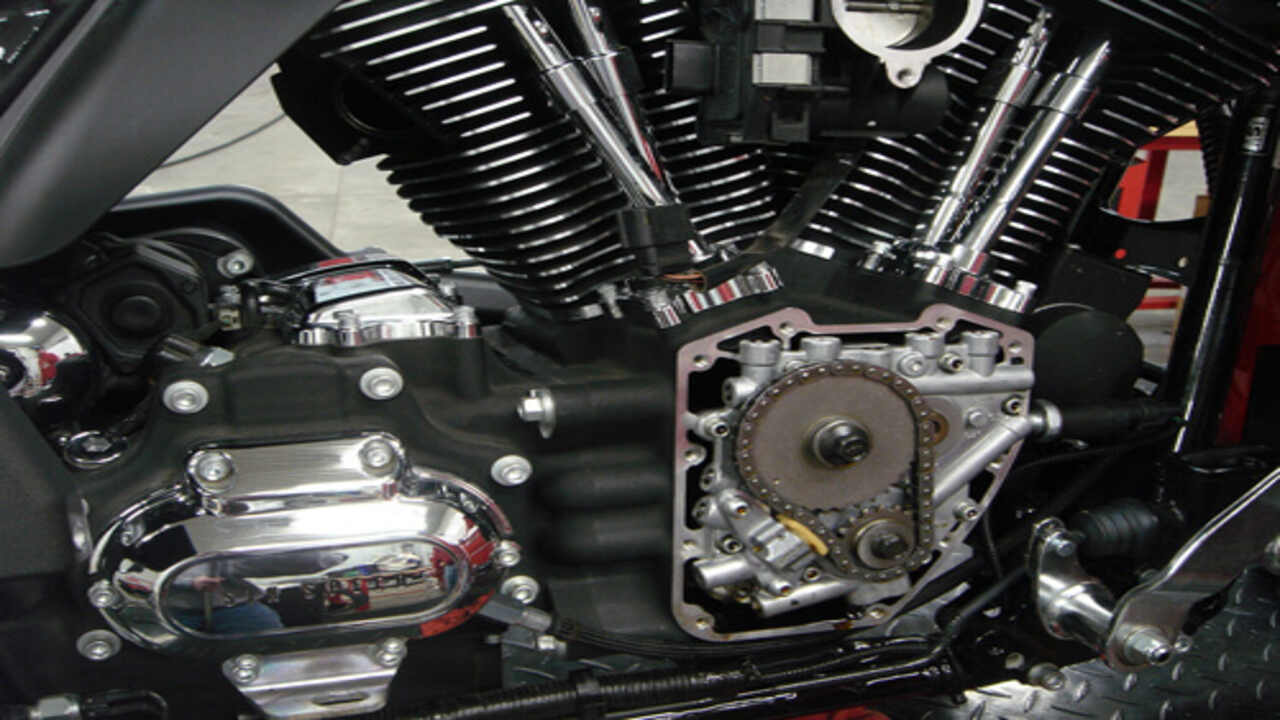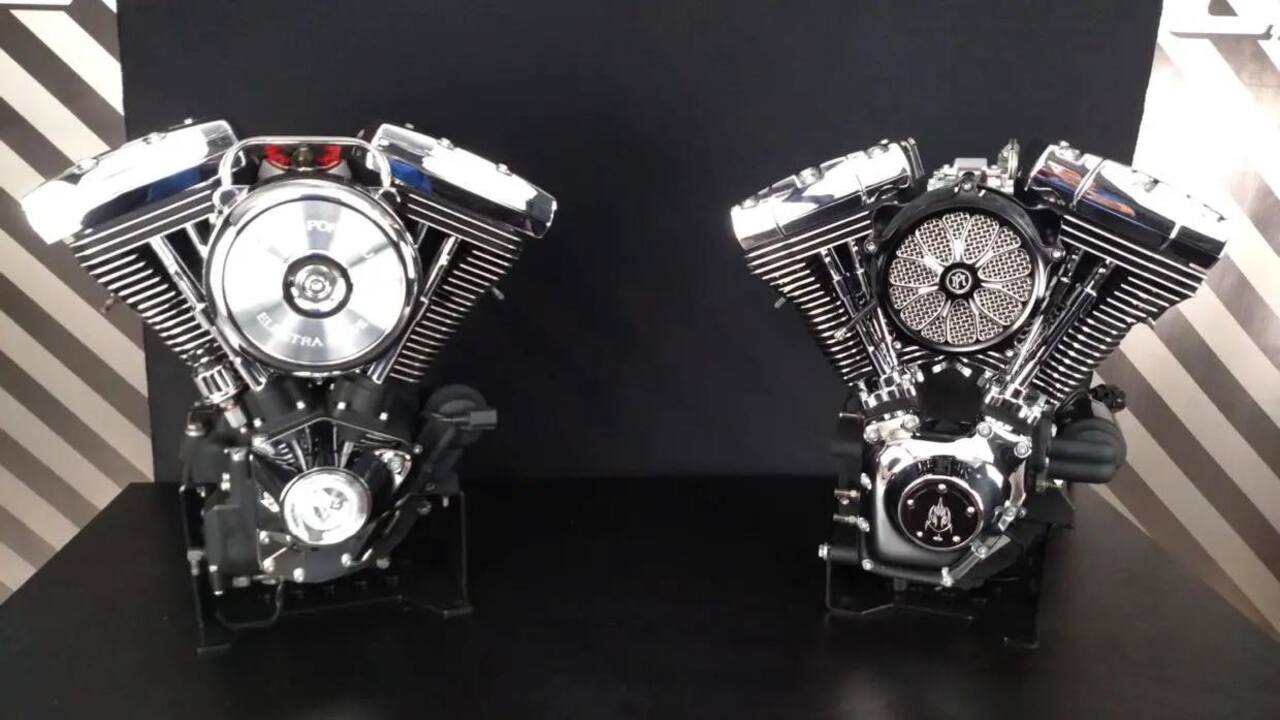Harley-Davidson, the iconic American motorcycle brand, has produced legendary bikes for over a century. With a rich history and a loyal following, Harley-Davidson has continuously evolved its engines to suit the changing demands of its riders.
However, one debate that has sparked up among Harley enthusiasts is comparing the Evo and Twin Cam engines. The Evolution (Evo) engine, introduced in 1984, significantly improved over its predecessor, the Shovelhead engine.
Here, we will delve into Harley Evo vs Twin Cam, analyzing their design, performance, and overall impact on the Harley-Davidson legacy. Whether you are a die-hard Evo fan or a loyal Twin Cam rider, this article will provide an informative and unbiased comparison between these iconic engines.

Harley Evolution Engine Overview

Harley-Davidson, a renowned American motorcycle manufacturer, boasts a rich history steeped in tradition and innovation. One of their most iconic engines, the Harley Evo Cam, embodies the brand’s commitment to superior performance and reliability.
The Evo Cam, short for evolution camshaft, was introduced in 1984 as a replacement for the ageing Shovelhead engine. This technological advancement revolutionized the Harley-Davidson riding experience, enhancing power delivery and efficiency.
| Harley Evo Engine | |
| Introduction Year | 1984 |
| Engine Type | Air-cooled V-twin |
| Displacement | 1340cc |
| Valve Configuration | Overhead Valves |
| Camshaft | Gear-driven |
| Compression Ratio | 8.5:1 |
| Horsepower | Varies |
| Torque | Varies |
| Fuel System | Carbureted |
| Transmission | 4-speed |
| Primary Drive | Chain |
| Final Drive | Belt |
| Notable Features | Reliable and proven |
| Common Models | Harley Softail, Dyna, Sportster |
Harley Twin Cam Engine Overview

Harley-Davidson, a legendary American motorcycle manufacturer, has a rich history that spans over a century. One of their most iconic engines, the Harley Evo Cam, holds a special place in the hearts of motorcycle enthusiasts. The Evolution engine, the Evo, was introduced in 1984 and quickly symbolized power and reliability.
| Harley Twin Cam Engine | |
| Introduction Year | 1999 |
| Engine Type | Air-cooled V-twin |
| Displacement | 1450cc |
| Valve Configuration | Overhead Valves |
| Camshaft | Chain-driven |
| Compression Ratio | 8.9:1 |
| Horsepower | Varies |
| Torque | Varies |
| Fuel System | Carbureted or EFI |
| Transmission | 5-speed |
| Primary Drive | Cam chain issues |
| Final Drive | Belt |
| Notable Features | Increased power and torque, improved cam system |
| Common Models | Harley Softail, Dyna, Touring |
Harley Evo Vs Twin Cam: Differences And Similarities

Here is a discussion on Harley Evo vs Twin Cam. The Twin Cam and Evo are two of the best Harley-Davidson motors. During the 1980s, Harley’s reputation shrunk greatly because of different engine shortcomings. Thus, Harley went through a complete redesign of its engines. As a result, they introduced the Evo engines first. After that, the Twin Cam engine hit the market. They share a few similarities with greater differences.
| Harley Evo Engine | Harley Twin Cam Engine | |
| Introduction Year | 1984 | 1999 |
| Engine Type | Air-cooled V-twin | Air-cooled V-twin |
| Displacement | 1340cc | 1450cc |
| Valve Configuration | Overhead Valves | Overhead Valves |
| Camshaft | Gear-driven | Chain-driven |
| Compression Ratio | 8.5:1 | 8.9:1 |
| Horsepower | Varies | Varies |
| Torque | Varies | Varies |
| Fuel System | Carbureted | Carbureted or EFI |
| Transmission | 4-speed | 5-speed |
| Primary Drive | Chain | Cam chain issues |
| Final Drive | Belt | Belt |
| Notable Features | Reliable and proven | Increased power and torque, improved cam system |
| Common Models | Harley Softail, Dyna, Sportster | Harley Softail, Dyna, Touring |
Engine Design And Performance Compare
Regarding Harley-Davidson motorcycles, riders and enthusiasts have long discussed the debate between the Evo and Twin Cam engines. Both engines have their unique characteristics and appeal to different types of riders. The Harley-Davidson Evo and Twin Cam are two popular engine-style designs used in Harley-Davidson motorcycles. Here is a comparison of their design and performance characteristics:
Evo Engine
The Evolution engine, commonly known as Evo, was introduced in 1984. It features a V-twin superior design with a 45-degree angle between the cylinders. The Evo engine has a single camshaft overhead camshaft (SOHC) design and utilizes pushrod-activated valves.
The Evo engine is popular for its torquey power delivery and smooth operation. It offers good low-end torque, making it suitable for cruising and city riding. The Evo engine has a displacement ranging from 1,340cc to 1,450cc, depending on the model.
Twin Cam Engine
The Twin Cam engine was introduced in 1999, replacing the Evo engine in most Harley-Davidson touring models. It also features a V-twin design with a 45-degree angle between the cylinders. The Twin Cam engine has a dual overhead camshaft (DOHC) design, with separate camshafts for intake and side exhaust valves.
The Twin Cam engine life is designed to provide improved performance and power compared to the Evo engine. It offers increased horsepower and torque across the RPM range, making it more suitable for spirited riding and highway cruising.
Technology And Innovation Compare

On the other hand, the Twin Cam engine brought some significant improvements over the Evo. It featured a redesigned camshaft system, better cooling, and increased power.
The Twin Cam engine offered more horsepower and torque than its predecessor, making it a popular choice for riders who craved more performance and a modern riding experience. Harley Evo and Twin Cam are two different generations of engines used in Harley-Davidson motorcycles. Here is a comparison of the two:
Evo Engine
The Evo engine was introduced in 1984 and replaced the iconic Shovelhead engine. It featured an improved design with aluminum heads, overhead valves, and a more efficient combustion chamber, resulting in increased power and improved reliability.
On the other hand, the Twin Cam engine was introduced in 1999 as the successor to the Evo engine. It featured a dual overhead camshaft design, which allowed for improved valve lash timing and increased power output. The Twin Cam engine also incorporated a counterbalancing system to reduce vibrations and enhance overall rider comfort.
Twin Cam Engine
On the other hand, the Twin Cam engine was introduced in 1999 and replaced the Evo engine as Harley-Davidson’s primary powerplant. The Twin Cam engine brought further advancements in technology and innovation. It featured a dual overhead cam design called “Twin Cam,” which allowed for improved airflow and increased power output.
It also incorporated a counterbalancing system to reduce vibrations, enhancing rider comfort. Regarding performance, the Twin Cam engine offered more power and torque than the Evo engine. It provided a smoother, more responsive throttle response, making it a favorite among Harley-Davidson enthusiasts.
Riding Experience Compare
The Twin Cam engine incorporates advancements in technology and engineering, resulting in reduced vibrations and increased fuel efficiency. This is achieved through the use of counterbalance systems and improved combustion chambers.
On the other hand, the Evo engine, while still a reliable and robust powerplant, may produce more noticeable vibrations at higher speeds. The Harley Evo and Twin Cam are two popular engine options in Harley-Davidson motorcycles. Here’s a comparison of their riding experience:
Evo Engine
Introduced in 1984, the Evo engine quickly became a favorite among Harley enthusiasts due to its smooth power delivery and improved oiling system. With its V-twin design and displacement ranging from 883cc to 1340cc, the Evo engine offers a great balance of power and torque, making it suitable for city riding and long highway cruises.
On the other hand, the Twin Cam engine, introduced in 1999, brought some notable improvements over its predecessor. The Twin Cam engine offered increased power and performance with dual overhead cams compared to the Evo.
It provided a smoother and more refined riding experience thanks to its improved combustion efficiency and reduced vibration. The Twin Cam engine is available in different displacements, ranging from 883cc to 1868cc, offering riders more options according to their preferences and riding style.
Twin Cam Engine
The riding experience of a Harley-Davidson motorcycle equipped with a Twin Cam engine is often compared to that of a Harley-Davidson motorcycle equipped with an Evolution (Evo) engine. The Twin Cam engine, introduced in 1999, offers improved power, torque, and smoother operation compared to the Evo engine.
It provides a more refined and balanced ride, delivering ample power for highway cruising and quick acceleration when needed. The Twin Cam engine also offers better fuel economy efficiency and reduced emissions, making it a more environmentally friendly option.
The Difference In The Cooling System

The cooling system is what truly differentiates these two motors. Evo motors have less cooling efficiency. It has a smaller cooling surface, which makes it less efficient. Also, it uses an air cooling system.
Since the Evo motor has less cooling efficiency, it’s unsuitable for long rides. You can use it for daily commuting and short rides only. Conversely, Twin Cam engines with a larger displacement capacity also have a larger surface. So, it features an improved cooling system. Its better cooling system makes it ideal for long tours and adventures.
The Difference In The Push Rod System
Evo engines of Harley motorcycles have a larger pushrod angle. It’s one cam that makes space for the larger pushrod. On the other side, Twin Cam has two cams. So, it has a smaller pushrod angle. This contrast happens because a larger pushrod angle means the cam will be smaller. Nonetheless, the pushrod angle performs equally well for both engines. The engine design and built quality don’t affect its performance at all.
Vibration And Transmission System

The vibration system of the Twin Cam and Evo motors works differently. You will only notice the difference when you drive the motorcycles a couple of times one by one. Besides the vibration system, you will also find a difference in the transmission system of Evo and Twin Cam motors.
As you can see, the Evo engine’s gearbox is separate from the actual engine’s. The engine produces a strong vibration. Thus, riders will enjoy a robust feel while riding Evo motors on off-road routes. On the other side, the gearbox of the Twin Cam engine connects with the engine using a rubber mount. It allows quick and easy mounting of the engine.
Conclusion
The debate between Harley Evo vs Twin Cam engines ultimately concerns personal preference and intended use. While the Evo may have a simpler design and nostalgic appeal, the Twin Cam offers more power and technology advancements. The Evo remains a beloved classic for its simplicity and reliability.
Ultimately, the choice between the two will come down to personal preference, and the type of riding experience desired. Both engines have their strengths and dedicated fan bases, and it’s important for riders to carefully consider their riding style and needs before choosing between the two. Ultimately, both engines are iconic and reliable choices for Harley-Davidson motorcycles.

Question: Will a 2016 Dyna 6 speed transmission bolt up to a 2006 96″ Twin Cam (B) engine, and will the 2006 inner primary fit. Regardless of chassis considerations ?
Thanks
Cam
It is not possible to determine whether a 2016 Dyna 6-speed transmission will bolt up to a 2006 96″ Twin Cam (B) engine without more information. The transmission and engine are two separate components and their compatibility depends on multiple factors such as their specific dimensions, mounts, and electrical connections. Additionally, the inner primary of the 2006 model may not fit with the 2016 transmission and engine, as the inner primary is designed to work with the transmission and engine it originally came with. It is important to consult a mechanic or a specialist in Harley Davidson motorcycles to make sure that the transmission and engine are compatible and the inner primary will fit